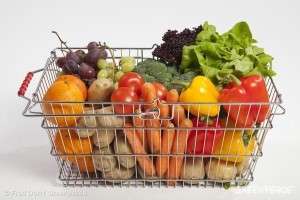Investments in ethanol and organic food
- Sep
- 17
- Category: Invest in Brazil
Focusing on long term perspective is the key for successful investment in Brazil.  Surprisingly, the biggest foreign investors in Brazil are European companies, not American ones. Between 2004 and 2011, such american companies as Kraft, Alcoa, Pepsi and four other invested approx. $244 million, while during the same period, Fiat, Nestl?, Novartis and two dozen other European companies invested over $4 billion. European companies focused on the long term success, while American managers  are focused on short-term profits and their companies’ daily stock price.
Produce ethanol in BrazilÂ
Brazil is the largest manufacturer and exporter of ethanol. There are the following opportunities to source feedstock for start-up ethanol project in Brazil:
- Sugarcane, cultivated on own territory (yield of 5 tons  per ha per year[1]);
- Sugarcane, purchased from local farmers;
- Sorghum, switchgrass, and wood (incl. waste) from deforested areas and other occasional sources.
Mash, as a by-product of distillation can be used as a natural fertilizer and to feed cattle. This by-product, in fact is more valuable than the alcohol fuel. The potential revenue that can be generated from selling organic vegetables, fishes, mushrooms, and earthworms can be over 20 times the revenue made from selling the alcohol fuel alone.
Important concern about location of distillery is water availability, because production consumes 100 liters of water per liter of ethanol produced. Water is used directly in yeast propagation, molasses preparation, and a host of other processes, and indirectly in steam generation, cooling, etc. Energy of ethanol distillation comes entirely from the bagasse and plant “wastes”.
Produce organic food in BrazilÂ
According to price researches of Rodale Institute , customers agree to pay 10%-100% premium for organic food. Such percentage varies not only for specific products, but also for specific regions, e.g. 65% in Boston, MA and 5% in San Francisco, CA for oranges and apples. Probably the reasons are different health concerns and availability of local food because of different ecological conditions and climate.
Investor may charge premium price for organic food or may  use market pricing with clear products’ differentiation as organic ones. This may allow not only to maintain reasonable market share, but also to promote idea of competitiveness of organic food vs. conventional one, thus attracting more followers.
Organic food excludes use of pesticides, irradiation, antibiotics, hormones, genetically modified ingredients, synthetic fertilizers, minimizing use of fossil fuels and following principles of permaculture agriculture:
- There’s no concept of waste or of externalities, and the outputs of one element of the system are the inputs for another, with all nutrients being completely cycled to maximum effect and system stability;
- Using multiple crops in the same space, avoiding large stands of single crops, use of plants, which not need to be planted every year and require minimum of maintenance and fertilizers.
- Permaculture ensures reliable supply of highly nutricius organic food: apple, apricot, chestnut, hazelnut, pear, peach, lime, berry, garlic, onion, shallot, carrot, wild rice, squash, tomato, etc, depending on local conditions.
Nowadays organic food industry grows steadily, 5- 20% p/a, caused by multiple factors, including:
• Increase in diet related illnesses, such as the rate of U.S. obesity amongst youth;
• Increased health care costs and adoption of preventative medicinal practices;
• Public awareness of “non-organic” food’s detrimental impact on health;
• Major public health crisis, such as Mad Cow disease ;
• Organic agriculture is competitive to conventional one: according to studies by USDA Economic Research Service, use of chemical pesticides and fertilizers, genetically engineered seeds finally increases per acre expenditures and delivers significantly lower returns to growers ; thousands of experimental trials showed no difference in yields of engineered versus non-engineered crops.
[1] Jos? Goldemberg (2008-05-01). “The Brazilian biofuels industry”. Biotechnology for Biofuels
- Close to the beach
- In the mountains
- Top choices
- Life in Brazil
- Invest in Brazil
- Why Brazil
- Visa for Brazil
Archives
- January 2024
- April 2019
- February 2016
- December 2015
- July 2015
- June 2015
- May 2015
- April 2015
- February 2015
- March 2014
- January 2014
- January 2013
- December 2012
- November 2012
- October 2012
- September 2012




